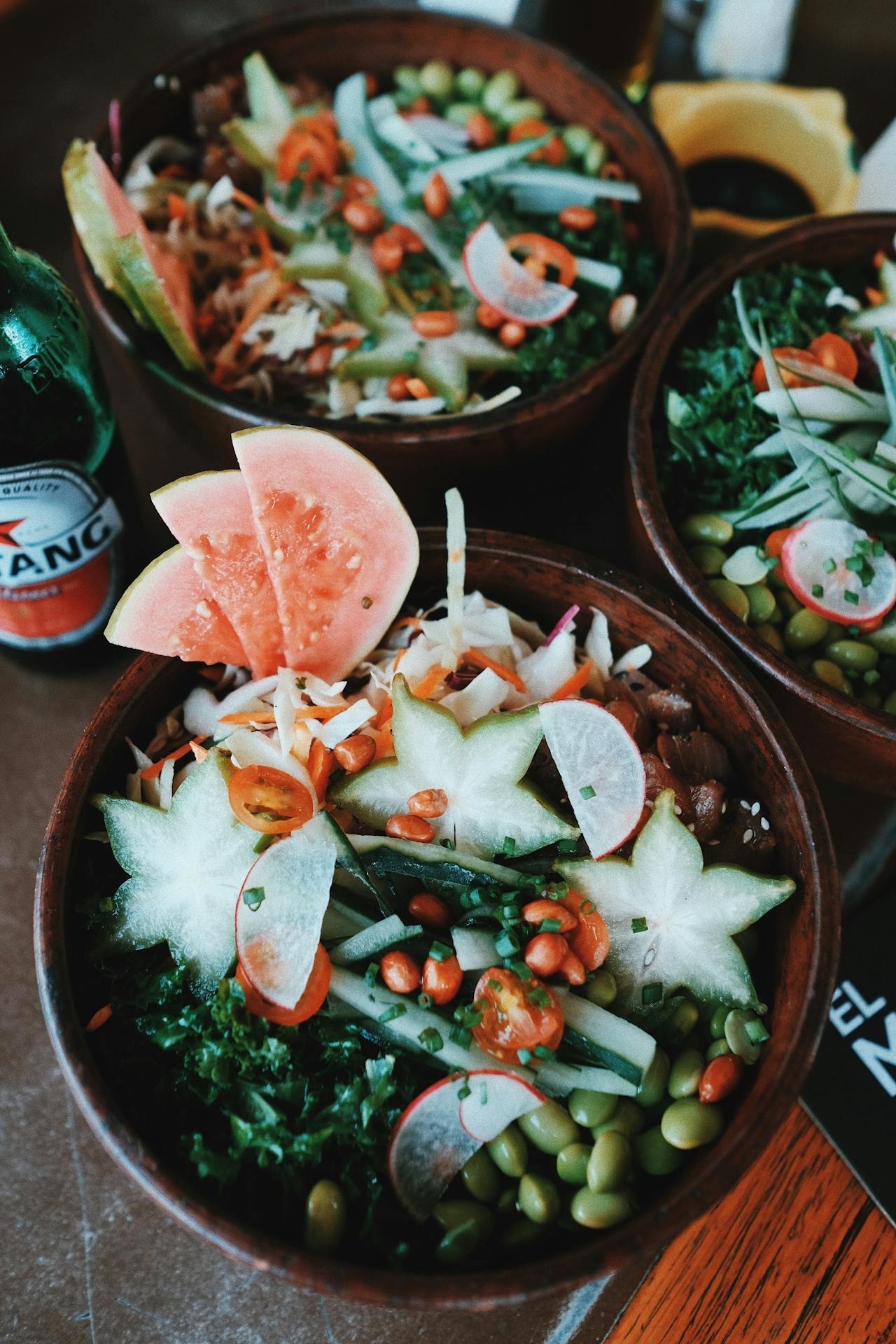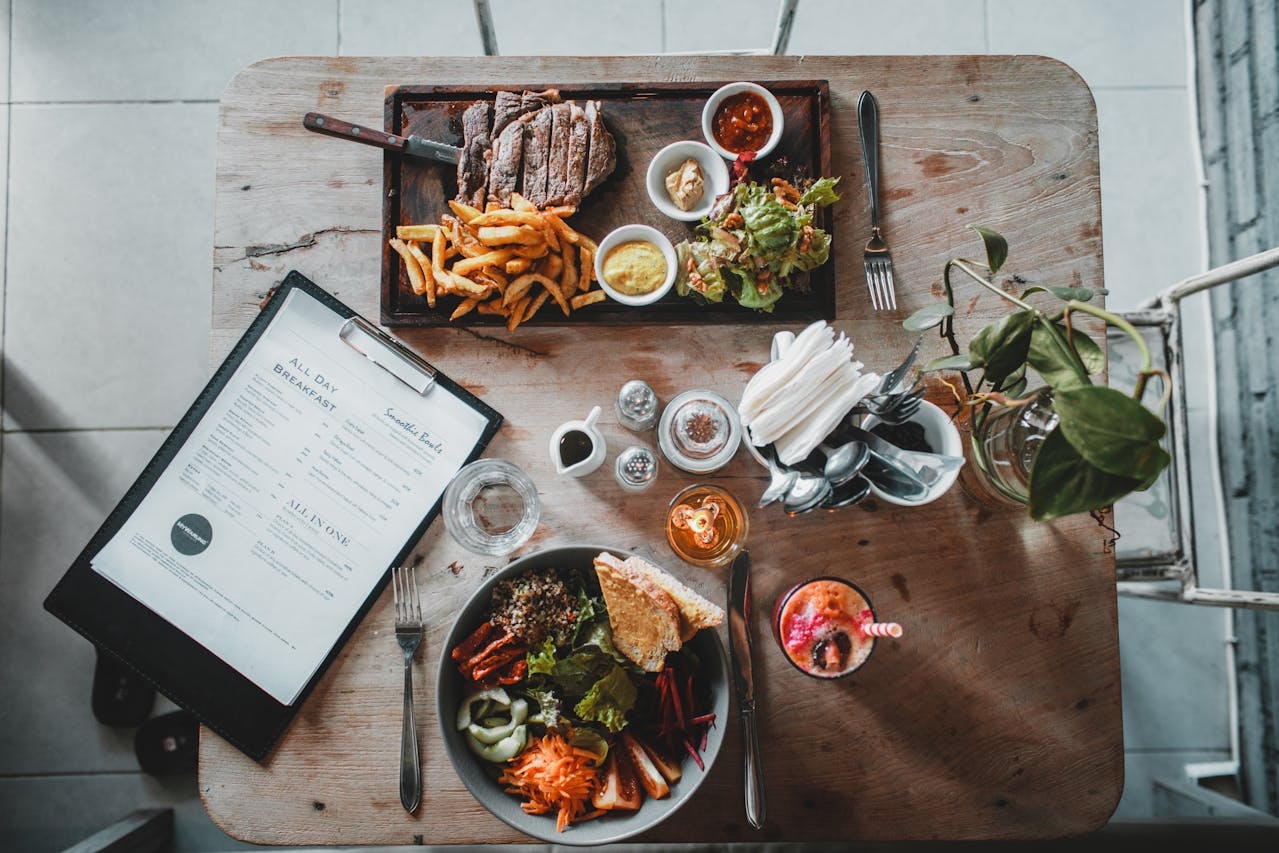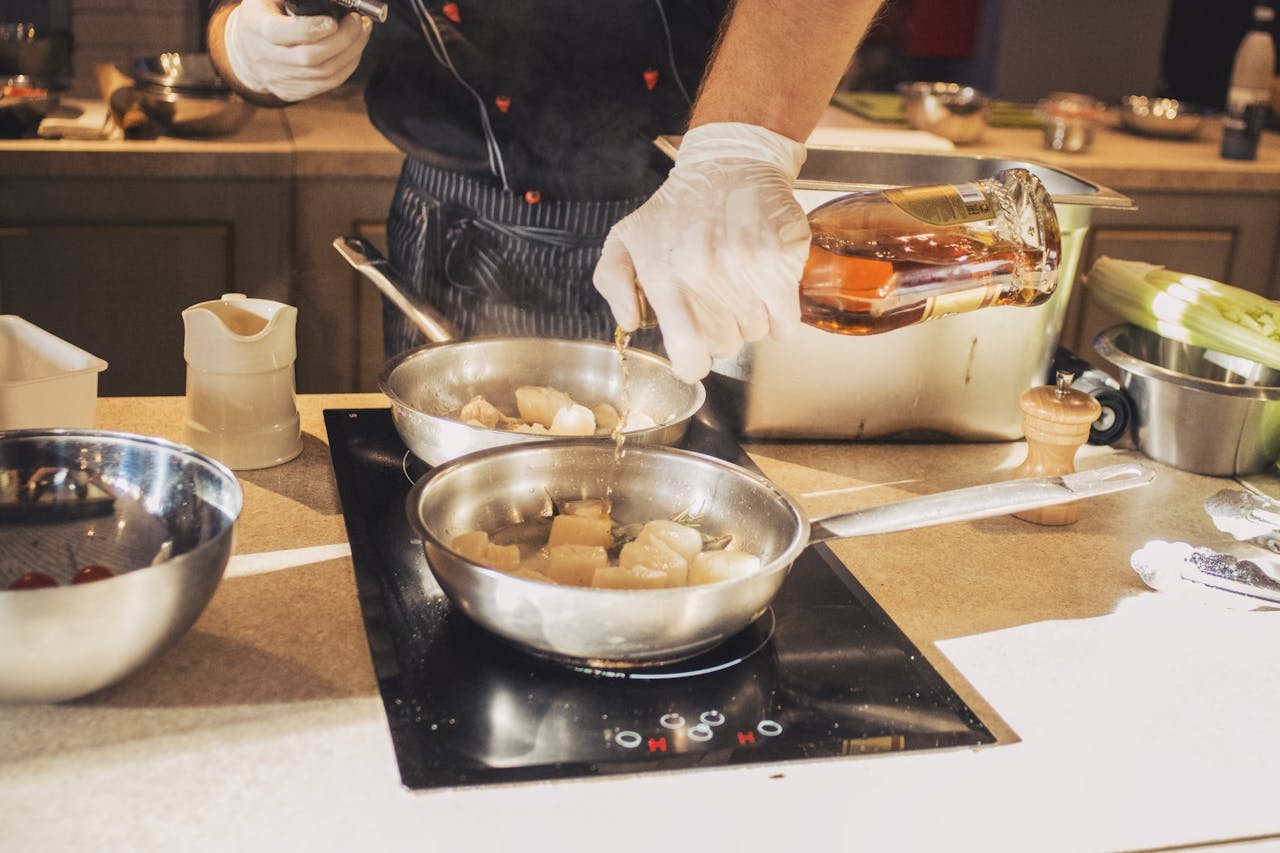Mastering Menu Flexibility: How Can Cafes Adapt to Dietary Needs?
By Nikita Nielsen · 12. March 2024
Catering to different dietary needs is now essential for cafes that want to keep their customers happy.
This article looks at practical ways cafes can do this.
It shares tips on how to tweak menus, train staff, and prepare food so that everyone can find something they enjoy and can eat without worry.
Key Takeaways
- Cafes are updating their menus to include a variety of options that cater to the ever-changing dietary preferences of their customers, from gluten-free items to fresh lettuce wraps.
- To avoid the confusion caused by hidden allergens, menus are now designed with clear symbols and descriptions to ensure everyone can choose their meals safely and easily.
- Sustainability is the new trend, with cafes reducing food waste while offering choices that appeal to everyone, whether they’re cutting carbs or looking out for animal welfare, making both the planet and patrons happy.
Understanding Diverse Diets in Modern Cafes
 cafe diet
cafe diet
It’s time to acknowledge that the variety in diets we see today goes beyond a mere trend; it signifies a collective yearning for well-being and a respectful nod to the diverse cultural tapestry that enriches our society.
Nutrition experts agree that a good mix of foods is key🔑 to a healthy diet, providing a range of nutrients that keep us in top shape.
It’s not only about how many different things you can pile onto your plate, but also about including a variety of food types that together hit all the right nutritional notes, satisfying various dietary needs.
Today’s food establishments are dishing out tastes from around the globe, meeting the needs of everyone from those who can’t handle gluten to those watching their heart health.
Cafes are adapting their menus to accommodate health and dietary needs, understanding that offering healthy, tasty options is just as important for our bodies as it is for our taste buds.
Crafting an Inclusive Menu
 cafe food menu
cafe food menu
When talking about creating a menu that everyone can enjoy, it’s all about finding the right mix.
Cafes are getting good at this balancing act, offering a bunch of choices without making the menu a headache to look through.
They’re letting customers get creative with their meals, picking and choosing what they want, while the kitchen keeps things running smoothly and sustainably.
Let’s take a closer look at the menu. How do those little symbols and clear descriptions help people with different dietary needs?
And how do cafes make sure there’s a personal touch in the food they serve, while still keeping their own unique style in the dishes they’re known for?
Menu Symbols and Descriptions
The devil is in the details—this means clear allergen information in cafes is a must.
Whether it’s prepacked or plated fresh, menus must demystify ingredients, using bold fonts or contrasting colours to spotlight the sneaky 14 allergens lurking in dishes.
It’s a visual cue for the allergy-prone to navigate their nosh with confidence.
Let’s discuss the significance of clearly listing nuts. For the nut-allergic, a menu that calls out the cashew from the pecan can be the difference between a delightful dessert and an unexpected medical concern.
Balancing Choice and Specialty
In the midst of diverse diets, cafes are creating personalised salads and versatile bowls, giving customers the freedom to customise their culinary journey.
Whether it’s swapping bread🥖 for a crisp lettuce wrap or selecting a heart-healthy dressing, providing choice is key to catering to contemporary lifestyle choices.
It’s about empowering diners to fine-tune their food to match their dietary preferences, making every meal a signature dish.
And for those whose dietary preference is more necessity than choice, adapting popular meals into low-calorie or nutrient-packed options is essential.
It’s the cafe’s way of saying, “We’ve got you covered, no matter your dietary scorecard”.
Allergy-Aware Food Preparation Techniques
 cafe food preparation
cafe food preparation
Comprehending the intricacies of allergen-aware food preparation is crucial for cafes aiming to prioritise choice and safety for customers with food allergies.
The battle against cross-contamination is waged with separate utensils and meticulously cleaned surfaces.
But it’s not just about separation; it’s about sequence. Preparing allergen-free meals first, and giving utensils a good scrub between uses, are the moves that make a cafe a trusted name in the food allergy community.
With dedicated tools and areas for allergen-free food prep, cafes create a sanctuary for those with dietary restrictions.
Training Staff on Dietary Needs Awareness
A well-informed staff is a cafe’s frontline in ensuring that dietary restrictions are respected and catered to with care.
It’s about fostering a dialogue that goes beyond taking orders to engaging in a meaningful exchange that ensures every customer’s needs are met with precision and empathy.
Providing staff with tools such as a ‘Dietary Guide’ can transform uncertainty into confidence for patrons inquiring about their meal options.
And with regular updates and role-playing exercises, staff can adeptly navigate the dietary preferences detailed within the menu.
Innovating with Gluten Free Alternatives and Dairy Substitutes
 Gluten Free food
Gluten Free food
Exploring the world of gluten-free and dairy-free alternatives, cafes have discovered a wealth of tasty options that pack a punch in the flavour department.
Picture this: coconut flour reinventing your favourite baked goods with a tropical twist, and a colourful array of gluten-free grains like buckwheat and sorghum opening up a new world of culinary possibilities for those avoiding gluten.
When it comes to dairy, the traditional milk is being replaced by its plant-based cousins.
Oat milk and almond milk are leading the charge, offering creamy, rich alternatives.
Cafes are getting creative, whipping up dishes that not only meet dietary needs but also dazzle with their presentation and taste.
Addressing Nut Allergies in Cafe Settings
Understanding the detailed complexities of allergy safety is a responsibility that cafes do not take lightly.
A meticulous system of storage and labelling is the shield against the accidental onslaught of allergens.
By segregating the pecans from the peanuts, cafes ensure that their nutty delights don’t become a danger to those with nut allergies or peanut allergies.
Clear, unambiguous labels are the map to safe consumption for the nut-allergic. With such guidance, cafes become a haven, where the only surprise should be the delightful burst of flavour in your coffee, not an unexpected allergen.
Special Diets as a Growing Trend
Special diets are emerging rapidly, and cafes provide the ideal environment for them to flourish.
The ketogenic diet, a heavyweight in the realm of dietary trends, is slicing off a substantial portion of the market’s profits.
And as cafes pour the perfect cup of keto-friendly coffee, they are also blending the lines between common dietary restrictions, including religious dietary restrictions, and mainstream munching.
The inclusion of low-FODMAP menu items and dishes catering to a variety of special diets is a testament to the shift in consumer eating habits and the cafes that keep their finger on the pulse.
Reducing Food Waste While Catering to Dietary Restrictions
 Food Waste
Food Waste
Cafes are refining their operations to minimise food waste. Through astute inventory control, they guarantee the freshness and optimal use of ingredients.
With the ability to customise dishes, cafes strike a harmonious chord between reducing waste and resonating with dietary preferences.
It’s not only about managing portions for health reasons; it’s a conscious effort to curb food waste.
By serving dishes that are perfectly portioned, cafes satisfy hunger and contribute positively to environmental sustainability.
Adapting Your Cafe’s Environment
The cafe environment goes beyond being a setting for your morning coffee🥤; it’s an ecosystem designed to accommodate the diverse dietary needs of its customers.
Implementing colour-coded systems and dedicated utensils isn’t just thoughtful—it’s essential for creating a safe dining space for everyone.
But it’s not just about safety; it’s about transparency and inclusion.
By offering nutritional information at a glance, cafes invite customers to dine with confidence, knowing their dietary choices are respected and catered to.
Summary
Cafes aren’t just places to grab a bite; they’re constantly adapting to meet the diverse needs of their customers.
Whether it’s offering gluten-free or lactose-free options, or avoiding nuts, every dietary requirement is a chance for cafes to showcase their creativity and care.
Next time you visit your local cafe, take a moment to appreciate the range of choices available.
And a note to cafe owners and managers: being adaptable with your menu is more than a courtesy—it’s key to keeping your customers satisfied and eager to return.
Frequently Asked Questions
How do I transition to vegan food?
Transitioning to vegan food can be gradual by incorporating more whole grains, beans, legumes, tofu, nuts, and seeds, and cutting down on the animal products you’ll miss the least. You can also start by planning your meals in advance and replacing animal ingredients with healthy plant-based alternatives.
How do you accommodate a vegan?
Accommodate a vegan by serving grilled, sautéed or roasted veggies with a delicious marinade or dipping sauce, and make sure to cook extra. Also, consider adding a baked potato to make a balanced meal. Using popular meat substitutes like lentils, beans, and tofu can also save time and effort, ensuring that everyone is satisfied with the meal.
What are the main reasons for the increase in dietary diversity in cafes?
Cafes are offering more dietary options because people are more health-conscious, the importance of cultural inclusivity, and the need to cater to various dietary needs for customer satisfaction and well-being. It’s a win-win situation for everyone involved!

